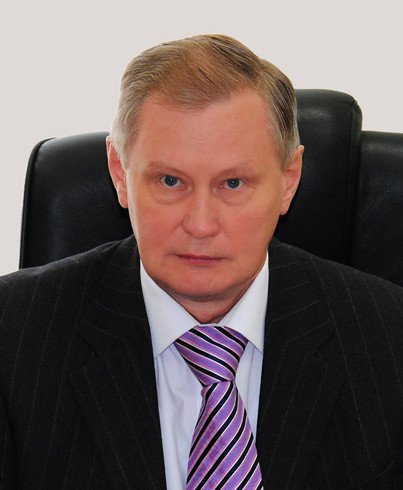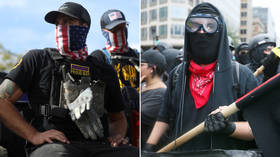Russia’s operation in Syria 5 years on: A military success, sure, but how to convert this into long-term political outcomes?

September 30 marks five years since Russia launched its first air strikes against terrorist targets in Syria. So, what are the political and strategic outcomes of the military campaign?
According to Russia’s Ministry of Defence, before the operation was launched, a military force was secretly deployed to Khmeimim Air Base in Syria. It included 50 aircraft, as well as combat personnel, support staff, security and special ops forces. The active phase of the Russian military operation in Syria lasted 804 days – from September 30, 2015, until December 11, 2017.
In total, Russia’s Aerospace Forces conducted over 44,000 sorties. On November 20, 2015, Russian jets completed 139 missions – the highest number of sorties in one day – striking jihadist targets. Tu-22M3 long-range bombers carried out 47 group strikes against terrorists, according to the ministry. They completed 369 sorties, covering distances of up to 2,500 kilometers.
To neutralize priority threats, high-precision long-range cruise missiles Kalibr and X-101 were used – navy ships and submarines carried out 100 strikes, while strategic bombers were deployed on 66 occasions to eliminate enemy infrastructure.
As a result, the ministry said, Islamic State (IS, formerly ISIS/ISIL) has been wiped out for good. By deploying its troops to the Middle East (and let's not forget that Russia was invited by Syria to assist), Russia has successfully maintained the balance of power in the region, ended the civil war in Syria, and prevented the country from disintegrating.
Let’s clear up some facts first. Over 44,000 sorties between 2015 and 2020 – is that a lot? And 139 combat flights on just one day – is that a new record? For reference, the Coalition forces launched around 700-to-800 sorties daily during the 1991 Operation Desert Storm in Iraq. The air campaign stretched for 39 days with the total number of sorties reaching 110,000. Of course, the allied coalition’s air capabilities by far exceeded those of Russia’s Aerospace Forces in Syria in terms of the number and types of aircraft. In other words, to compare the two, we need to keep in mind the difference in order of magnitude.
Also on rt.com US playing 'very reckless’ games with Kurdish separatists in Syria, risks exploding entire Middle Eastern region – Russian FMIndisputable benefits of the Syria campaign
Firstly, according to the Ministry of Defence, by carrying out its missions in the region, Russia’s Armed Forces gained considerable experience in terms of tactical planning, deployment of troops, establishment of necessary infrastructure, organization of logistics and technical support, and conducting combat operations – primarily in desert environments, on mountainous terrain and in urban conditions. In addition, the troops were able to hone their skills of organizing and conducting reconnaissance, air defense and electronic warfare.
Secondly, the ministry also reports that a significant portion or the armed forces received on-the-ground combat experience, including all military district commanders, combined-arms army commanders, heads of air and air defense forces, commanders of divisions, brigades and regiments, 90 percent of pilots, 78 percent of engineering troops, over half of air defense specialists, and over 60 percent of Russian Navy personnel.
Thirdly, a major outcome of the Syria campaign was the permanent establishment of two Russian military bases in Syria. One of them, the Khmeimim Air Base, is a first-class airfield that supports all types of aircraft. The other military base, located in Tartus, is a closed water area with state-of-the-art floating piers accommodating dozens of ships. All piers are equipped with vessel maintenance systems, unloading platforms, and a repair complex for servicing and minor repairs.
Also on rt.com Washington deploys armored vehicles to Syria & steps up air patrols after dust-up with Russian forcesProblems that remain in Syria
It is generally believed that the civil war in Syria is over. However, it is not clear whether the root causes of the bloody confrontation have been eradicated. Besides, no one can guarantee that the diverse groups within Syrian society will not clash again in the future.
The Kurdish issue in Syria is still not sorted. The US Army maintains some presence in the country, as well. Iran, too, is stepping up its military involvement in the Syrian Arab Republic. And it remains unclear how to best approach all these problems.
One of the most important issues today is, of course, the rebuilding of Syria. Most of the country lies in ruins, and, even by the most modest estimates, it would take at least 100 billion dollars to clear up the mess and restore normal life. Russia, weary of the protracted economic slowdown it’s been experiencing, doesn’t have that much in terms of immediately available resources. And even if it did, it is unclear how well Russia’s domestic audience, with its own interests and priorities, would take such an act of charity towards Syria, a country thousands of miles away.
For now, it’s obvious that the West won’t give a dime to rebuild Syria (a hundred or two hundred billion dollars is not such a big deal for Western economies) as long as Bashar Assad’s government remains in power.
Also, there is no clear understanding what the future of Russia’s military bases in Syria would look like after a change of leadership in Damascus – something that will inevitably happen, one way or another.
In conclusion, the Syria campaign of the Russian Armed Forces was, beyond any doubt, a success. Russia’s Ministry of Defence has completed all missions it had been tasked with. However, it is still unclear if the victories on the ground can be successfully converted into long-term political outcomes. We will have to await further developments.
Think your friends would be interested? Share this story!
The statements, views and opinions expressed in this column are solely those of the author and do not necessarily represent those of RT.















